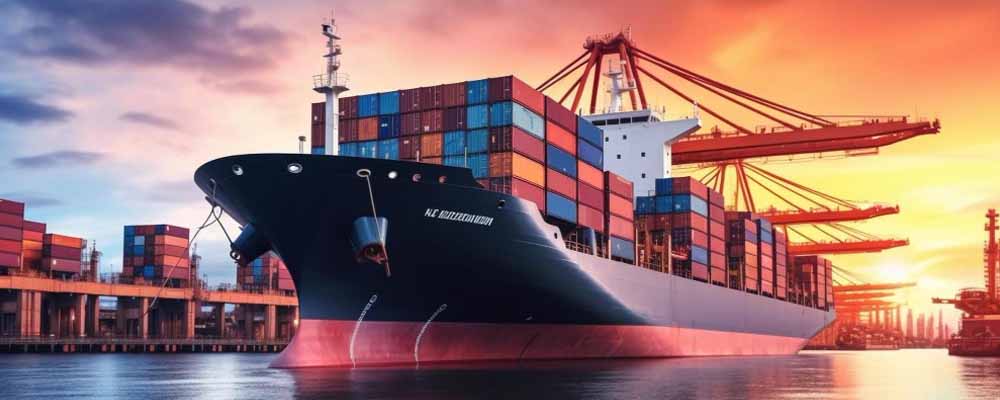 Known for its diverse wildlife, picturesque landscapes and sound economy, Australia provides a wealth of potential for various industries in terms of commerce. Ranking high in global indicators for quality of life and economic freedom, Australia offers growth to businesses it ties up with.
Known for its diverse wildlife, picturesque landscapes and sound economy, Australia provides a wealth of potential for various industries in terms of commerce. Ranking high in global indicators for quality of life and economic freedom, Australia offers growth to businesses it ties up with.
If you are seeking to start with importation to Australia, equip yourself with relevant knowledge first. Suit yourself and continue reading to know about the factors accounted for when starting this venture. Delve into how the process goes- your options for shipping, the main ports, the cost, the delivery schedules, the legal documents you need beforehand, and the freight forwarder partnership tips.
 What are the Ways to ship to Australia?
What are the Ways to ship to Australia?
The planning stage of importation includes selecting the way to ship goods to Australia. Aspects to assess are the dimensions and type of cargo, timeframes for transit, monetary issues and specialized handling considerations.
A typical mode of transport is sea freight which is best for bulky and large quantities of items. Shipping vessels accommodate both Full Container Load (FCL) wherein the whole container is meant for one shipment, and Less than Container Load (LCL) which can hold numerous shipments from different companies/individuals. On the more expensive side, air freight has the fastest transit time and is advantageous for perishable and time-sensitive goods.
Road and rail freight are used for deliveries within the country. It can be in conjunction with other methods of transport to reach its destination points. Lastly, courier services have door-to-door options for parcels that are small to medium in size.
What are the Main Ports in Australia?
Featuring the world’s sixth-largest coastline, Australia certainly keeps many state-of-the-art ports suitable for all types of maritime trade.
The Port of Melbourne, approximately 200 square kilometers, is the biggest port in Australia and accommodates a huge fraction of the country’s commerce. It is considered one of the largest and busiest ports in the Southern Hemisphere and has cutting-edge facilities.
Located in the east of Australia, the Port of Sydney symbolizes the country’s prowess in engineering linked to maritime heritage. This port in the most populous city in the country is known for cruise tourism, container shipping and cargo handling. Meanwhile, the Port of Brisbane is strategically located near industrial zones for a wide array of cargo- bulk goods, containers, and automobiles.
Here’s a list of Australia’s main ports:
| Port | Average Annual TEU’s |
| Port of Melbourne | 242,136.000 TEU |
| Port of Sydney | 1,000,000 TEU |
| Port of Brisbane | 114,489.000 TEU |
| Port of Fremantle | 715,800 TEU |
| Port of Adelaide | 400,000 TEU |
How much does it cost to ship a container to Australia?
Variations in shipping costs can be attributed to factors such as the transportation method, shipment’s port of origin and destination, the scheduled transit time, the category of goods and the container, the customs protocols, and extra services for handling.
Typically, the range of shipping costs to Australia is as follows:
| Country | 20ft | 40ft |
| United States | $2500 | $4550 |
| China | $850 | $1550 |
| Spain | €1150 | €4550 |
| European countries | €1150 | €4550 |
What is the Transit Time when shipping to Australia?
In general, delivery timeframe to Australia takes about 15 to 52 days. Experienced exporters would know that the transit time is collectively determined by many factors including the distance and route between starting and ending points, possible port delays, seasonal considerations, weather forecasts and shipping partners’ performance.
On average, delivery times to Australia are as follows:
| Country | Days |
| United States | 15 to 52 days |
| Europe | 32 to 40 days |
| Asia | 15 |
What paperwork is needed for international shipments to Australia?
The Australian Border Force supervises the clearance of all importations to Australia. Compliance with the import regulations of the country is crucial to have an effective importation venture.
The paperwork required for customs clearance are:
- Bill of lading or air waybill
- Informal Clearance Document or Customs Entry
- invoices
- Phytosanitary Certificate for plants, and any agricultural products
- Insurance certificate
- other pertinent documents as needed
Depending on the nature of the imported goods, there may be added requirements. For a more thorough list specific to the products you are shipping, visit the official Australian Border Force website at https://www.abf.gov.au/home.
 How do I find a freight forwarder in Australia
How do I find a freight forwarder in Australia
Transportation management, coordination and all the complex processes of importation can be overwhelming. That’s why partnerships with reliable shipping companies, carriers and freight forwarders are vital.
As intermediaries between shippers, delivery services, and other people/companies involved in the shipping process, choosing a trustworthy freight forwarder is a must. Pangea is a reputable logistics network that offers expertise and support in every step of importation.
Head over to Pangea’s website at https://pangea-network.com/ to kickstart your importation experience.
Frequently Asked Questions
- What is the estimated transit time for shipping a container to Italy?
In general, delivery timeframe to Australia takes about 15 to 52 days. Experienced exporters would know that the transit time is collectively determined by many factors including the distance and route between starting and ending points, possible port delays, seasonal considerations, weather forecasts and shipping partners’ performance. See list above for estimated transit times.
- How do you figure out the shipping cost to Australia?
Variations in shipping costs can be attributed to factors such as the transportation method, the shipment’s port of origin and destination, the scheduled transit time, the category of goods and the container, the customs protocols, and extra services for handling. See average costs depending on the country above.
 Conclusion
Conclusion
Importation to Australia, particularly if supplying the country’s most in-demand commodities, reap sizable benefits. It is a lucrative undertaking for many businesses as Australia has numerous trade agreements with different countries, making trade more seamless. Characterized by a strong economy and a wide variety of consumer markets, Australia is packed with import opportunities in all kinds of industries.
Focus on your business growth and let Pangea handle your logistics regarding importation. No need to worry because your shipments are well taken care of. We have our leading freight forwarders in Australia who are committed to helping you from start to finish.




 What are the Ways to ship to Australia?
What are the Ways to ship to Australia? How do I find a freight forwarder in Australia
How do I find a freight forwarder in Australia Conclusion
Conclusion



